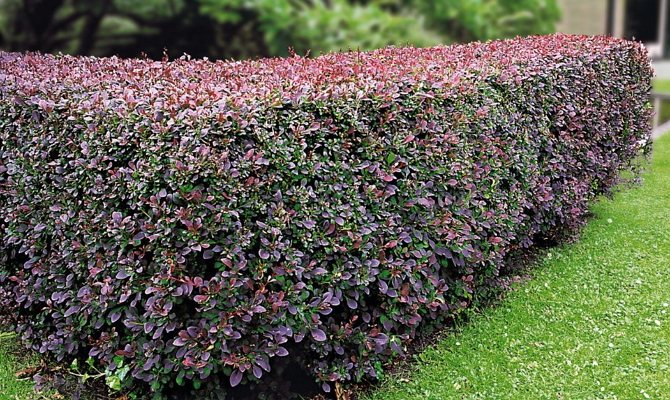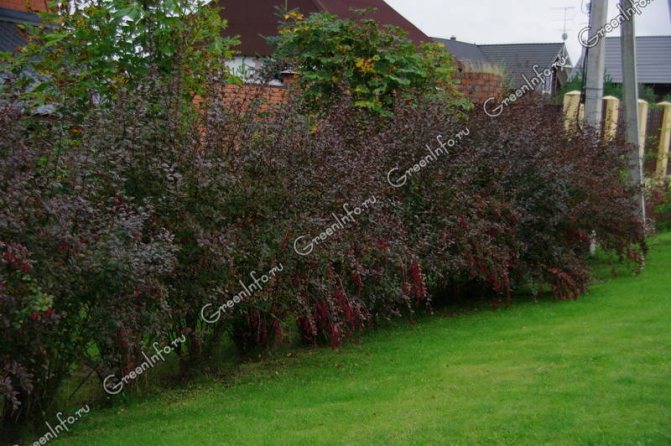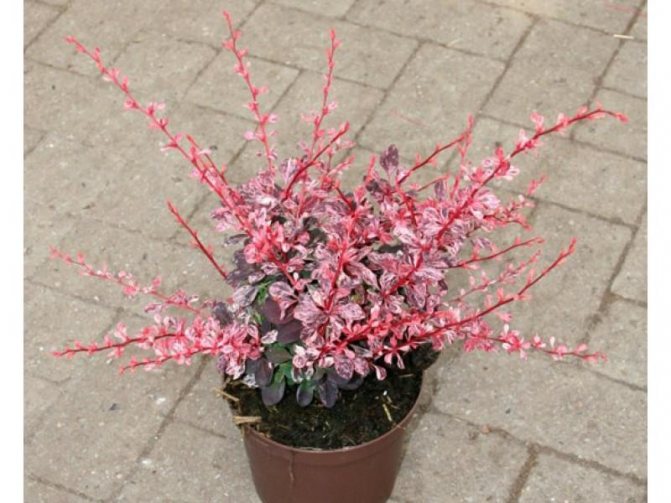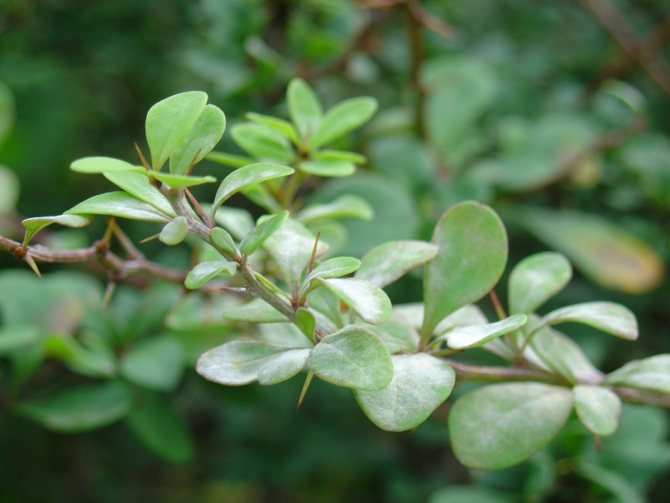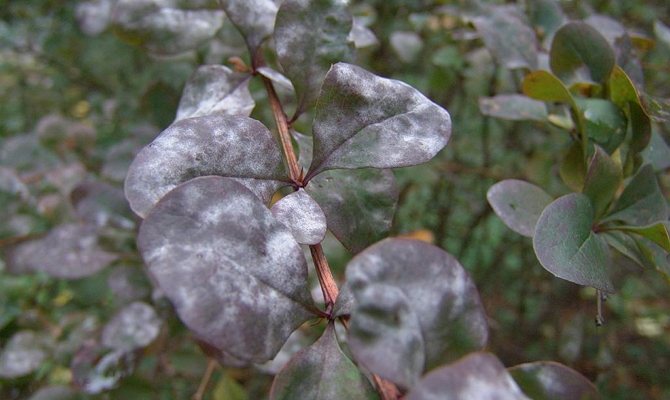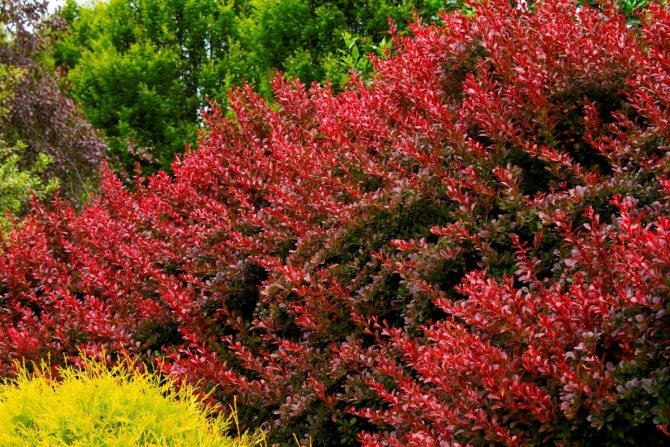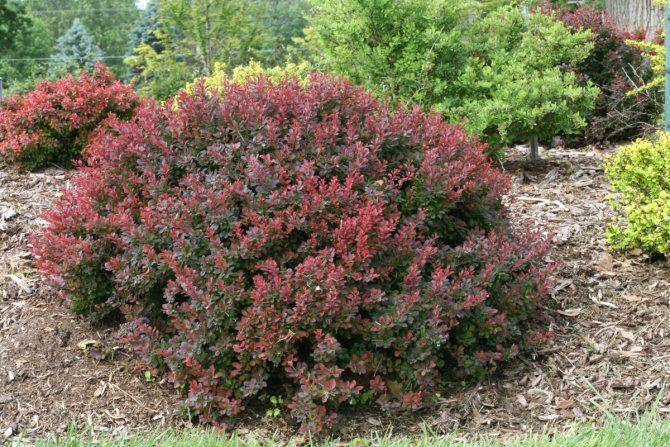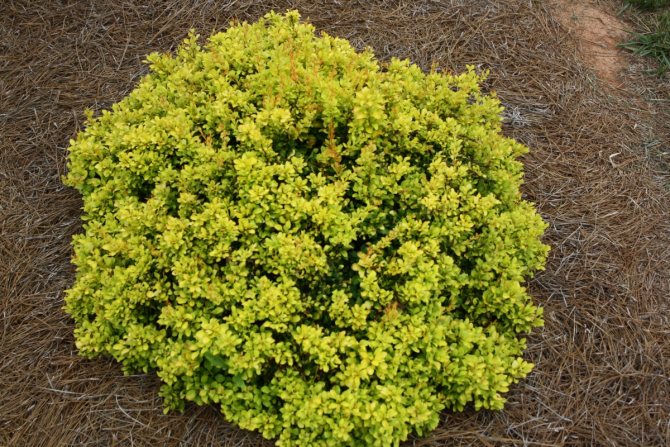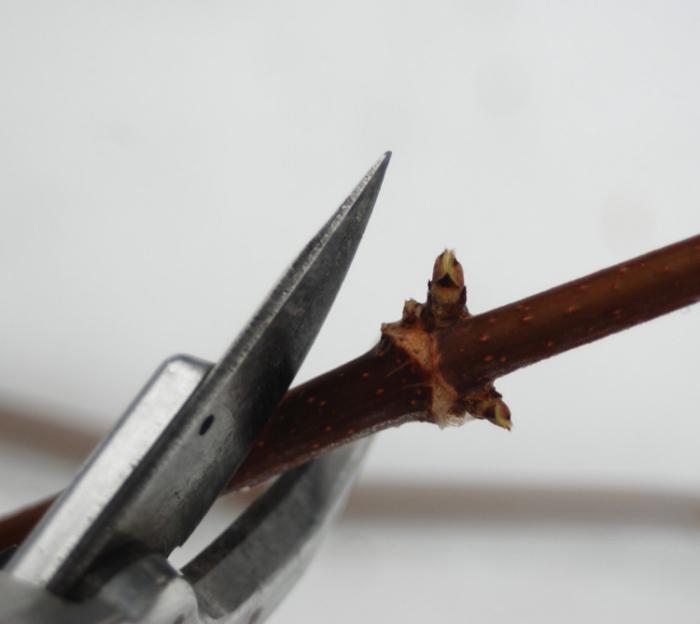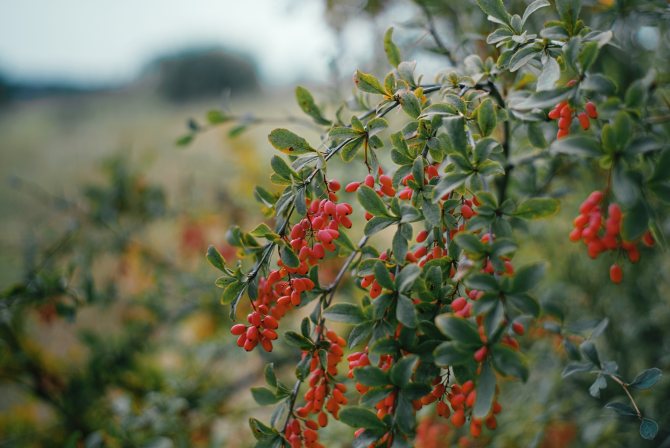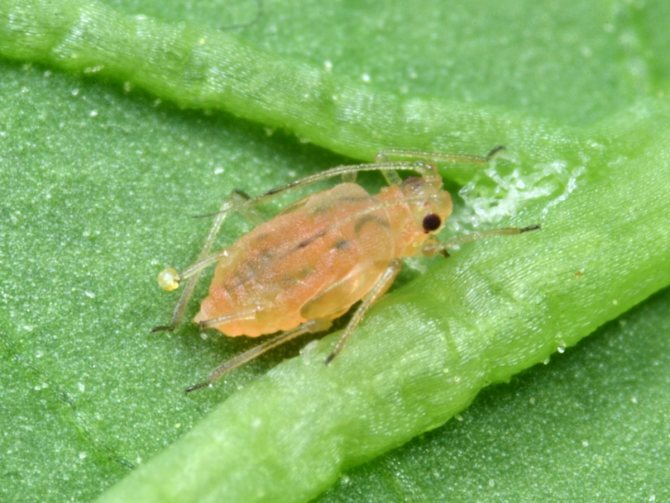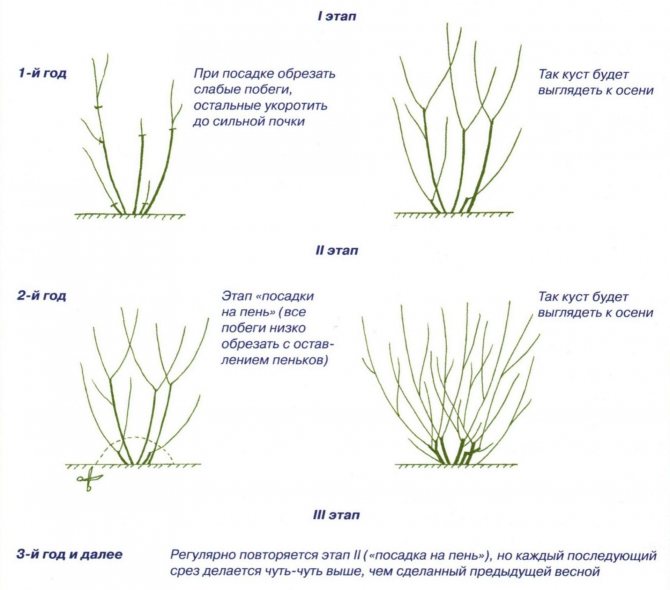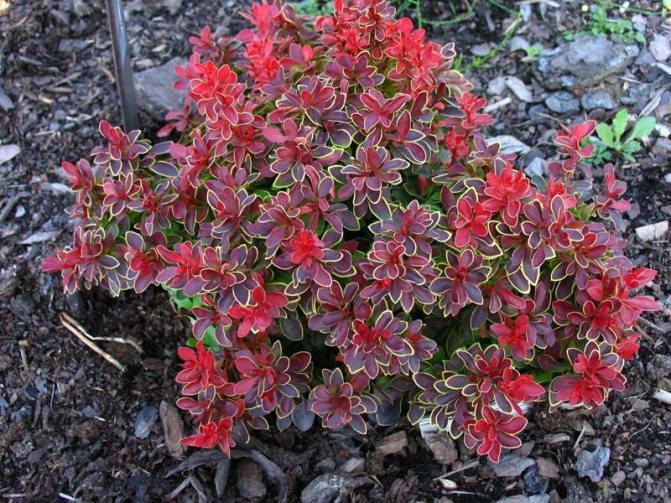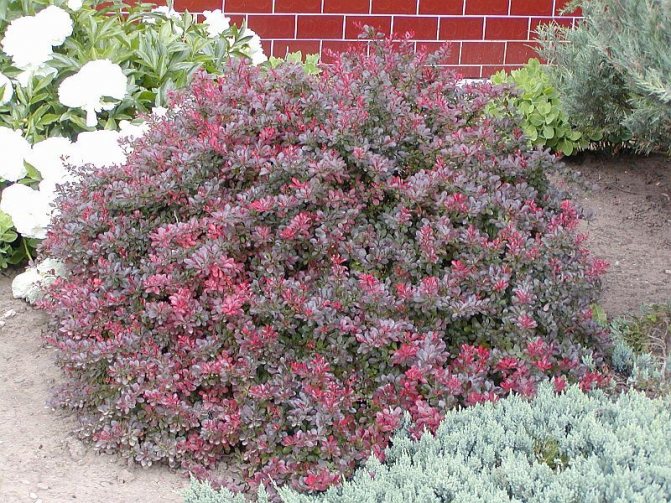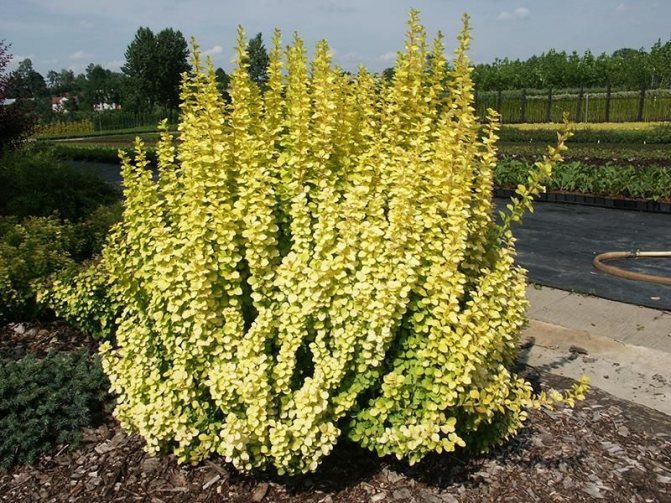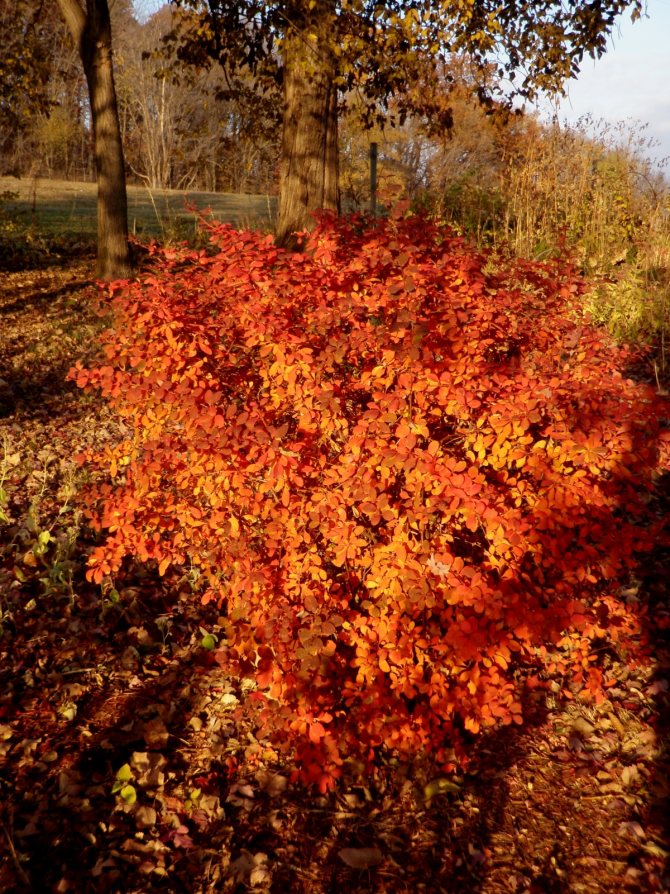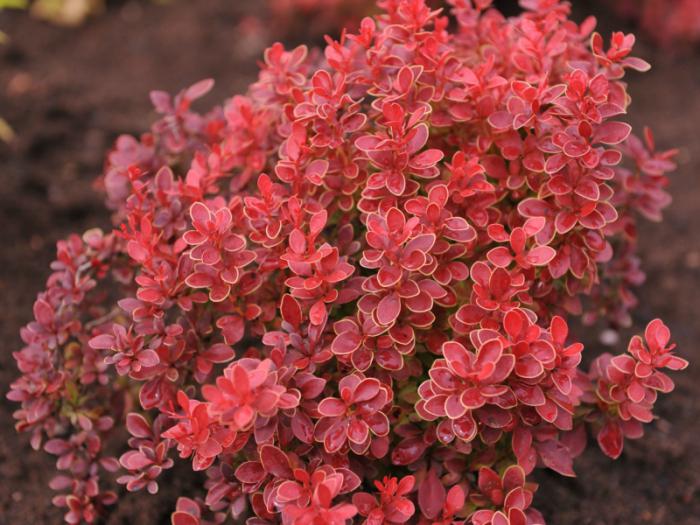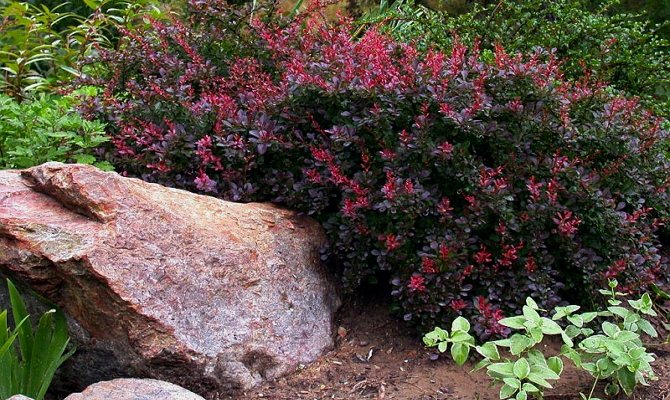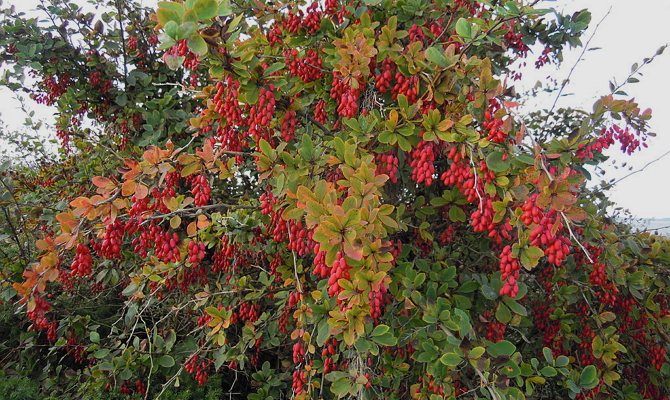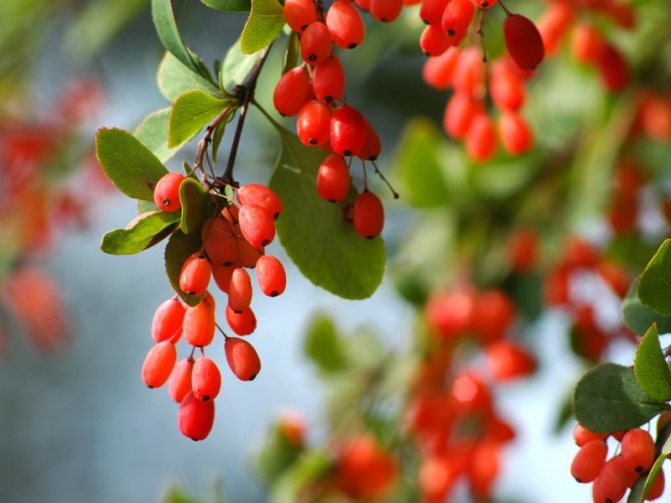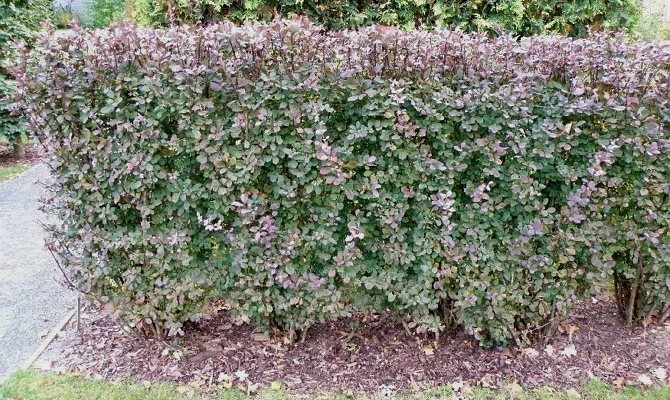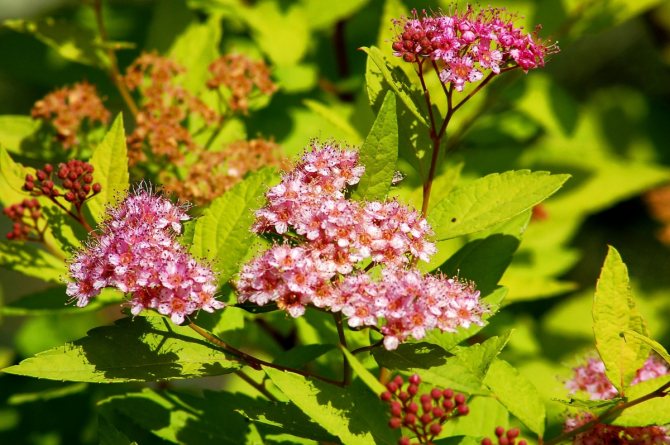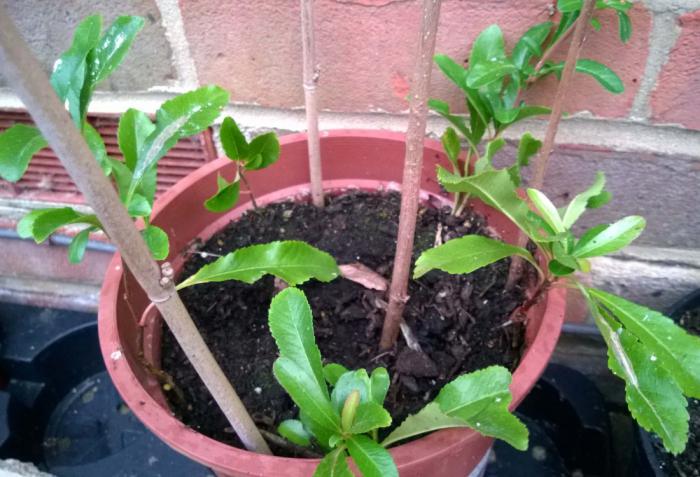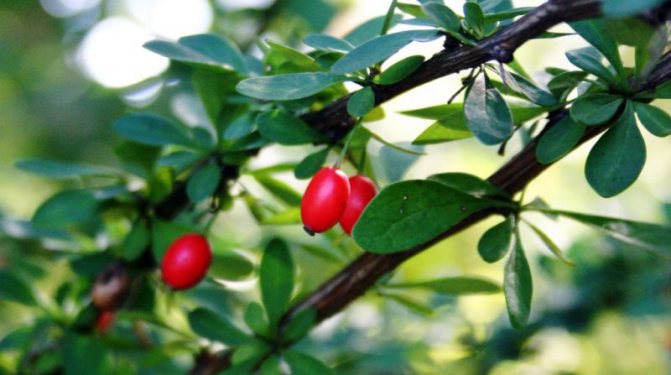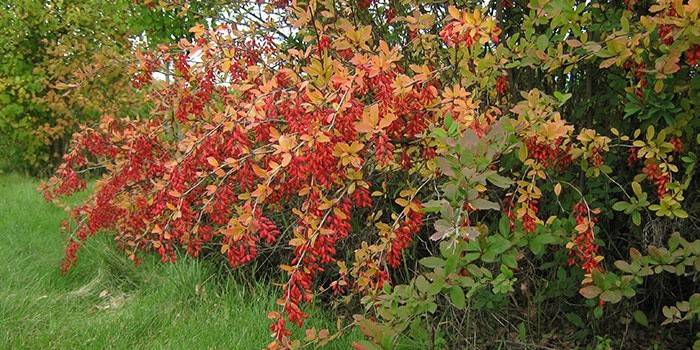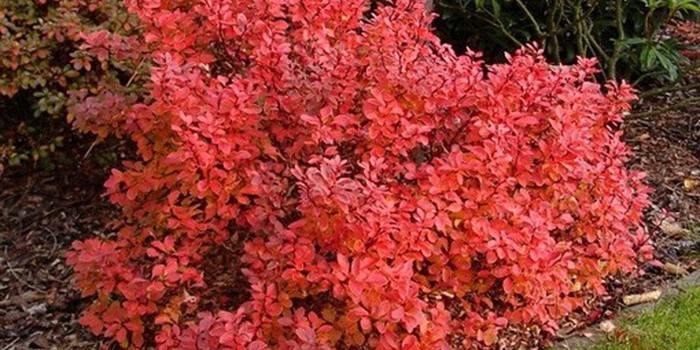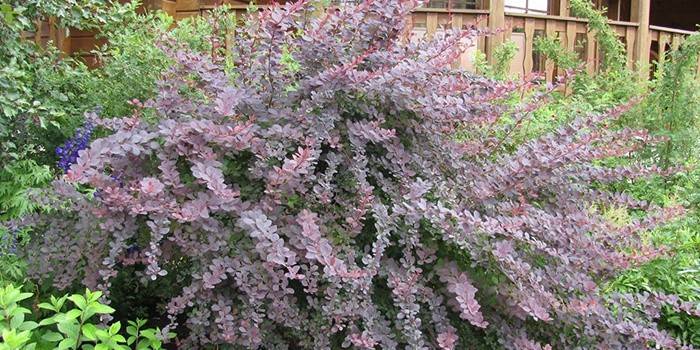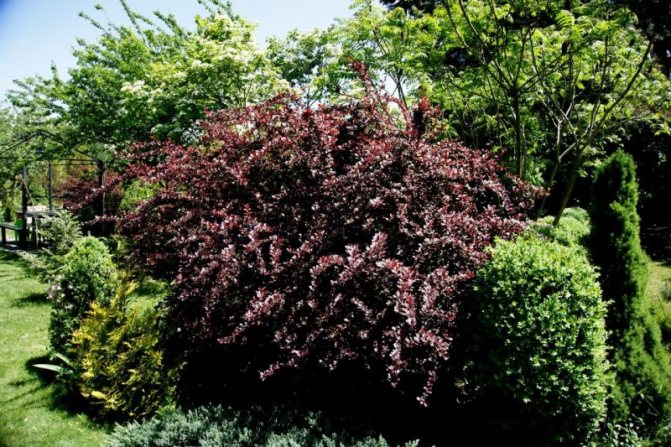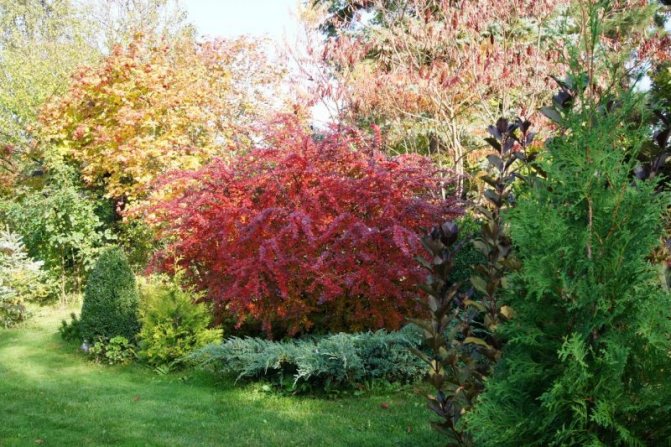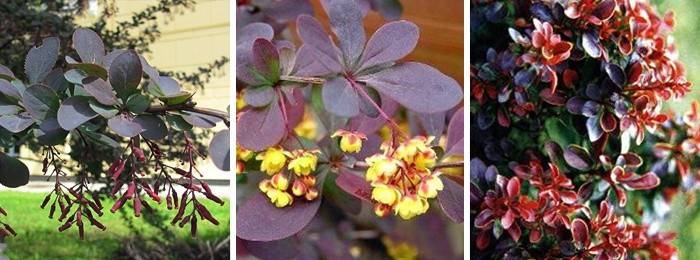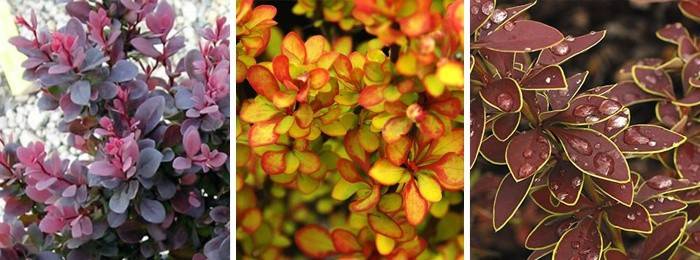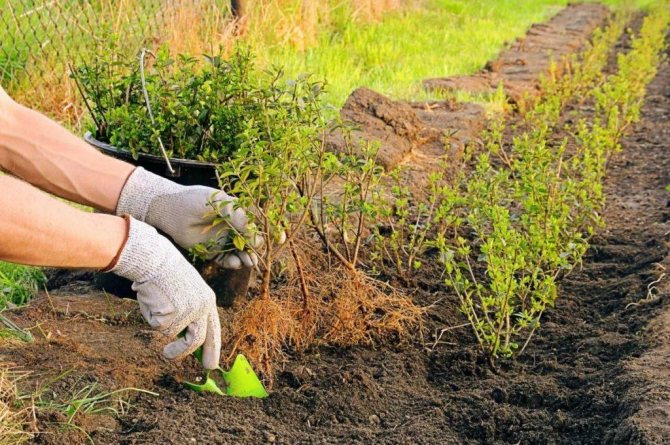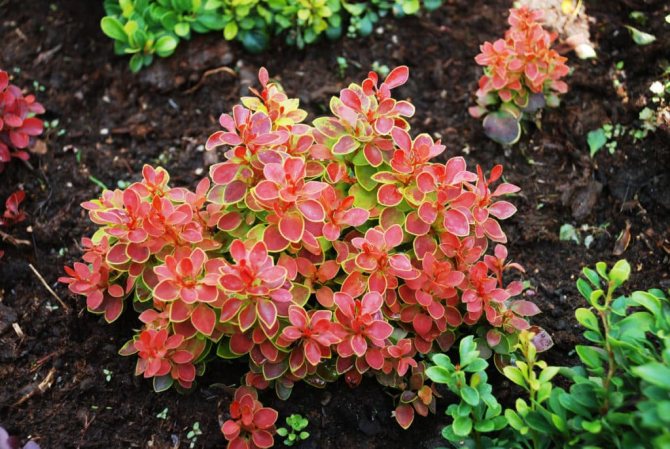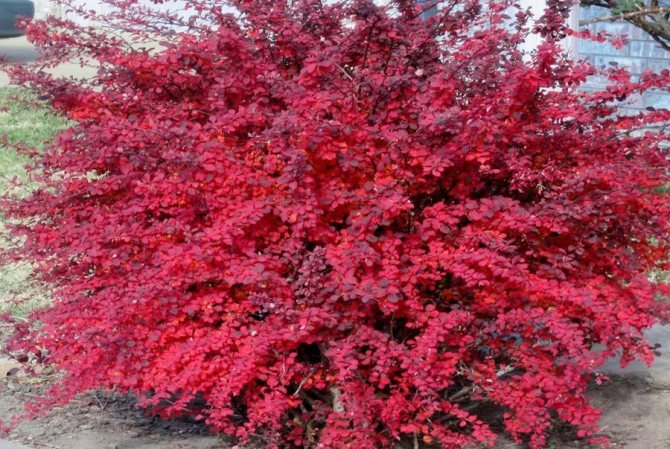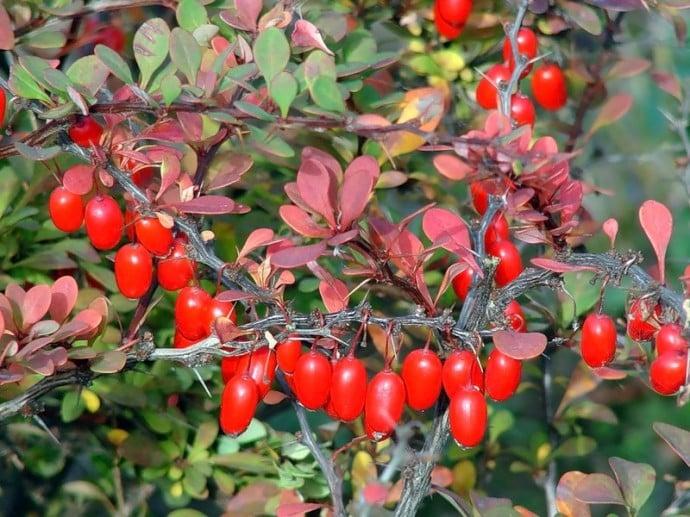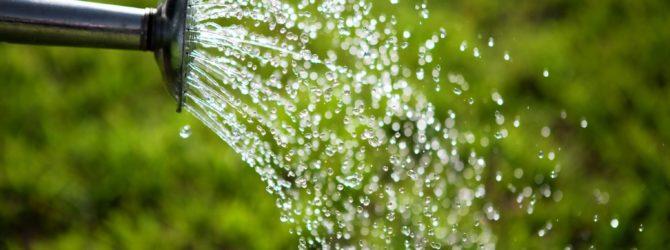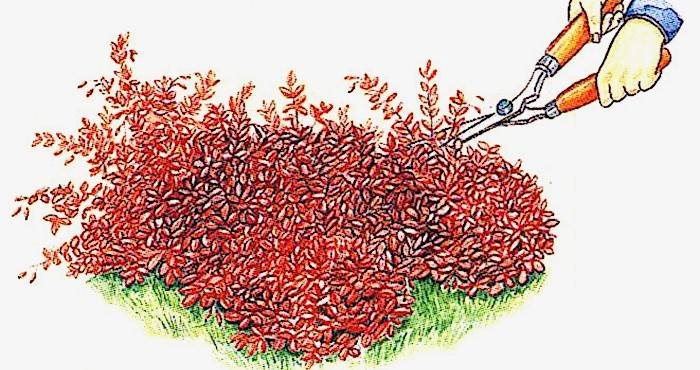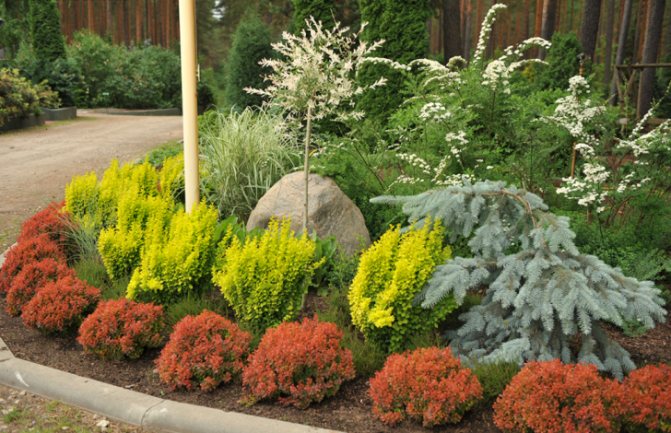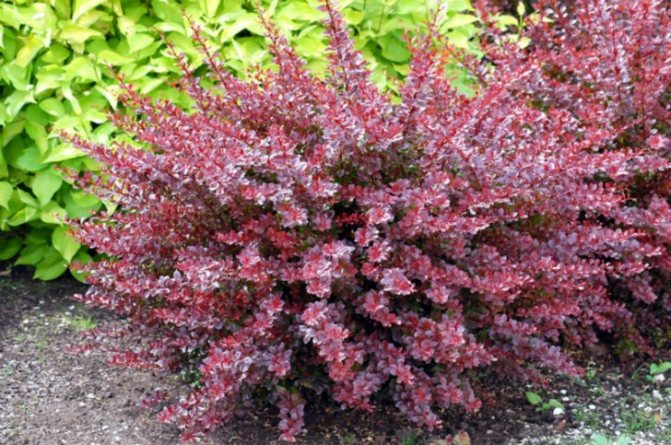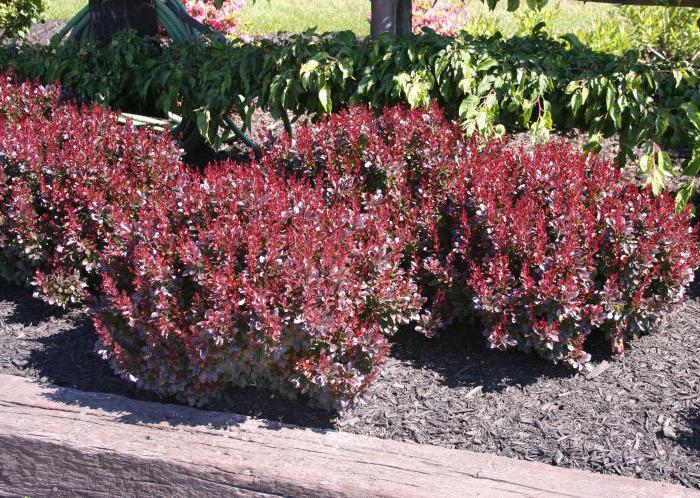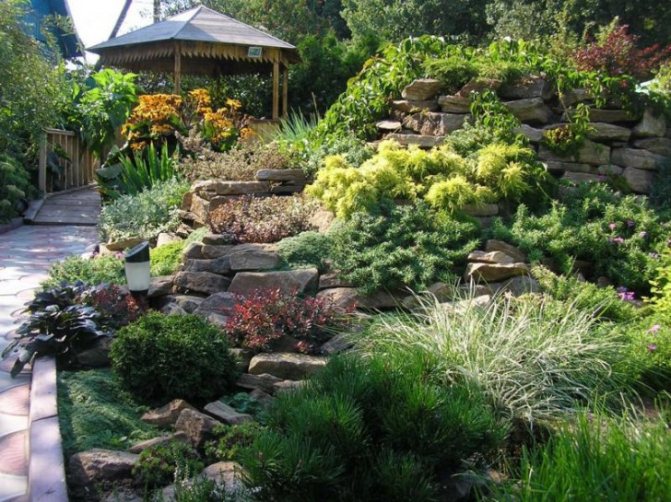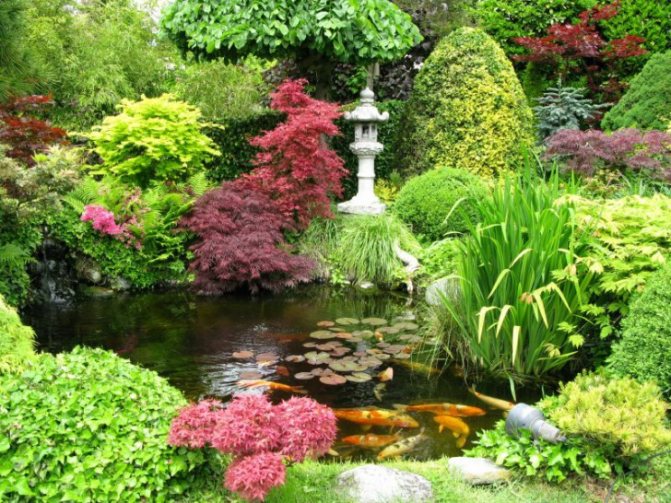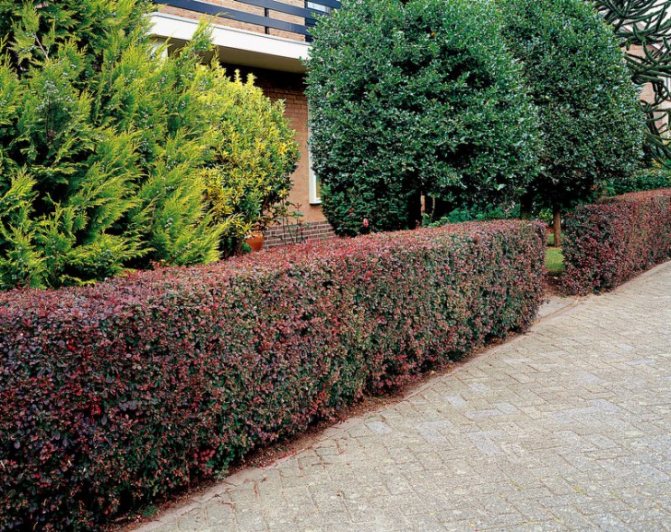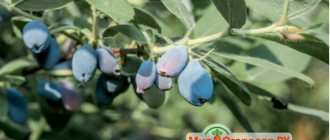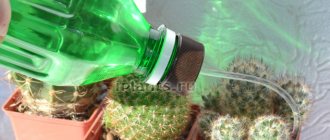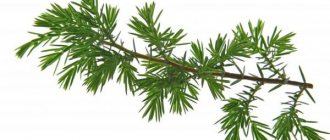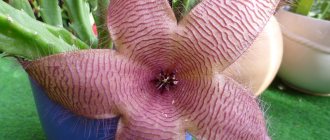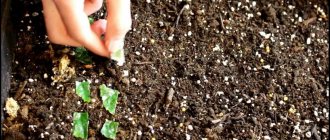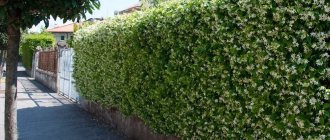The particular popularity of growing Barberry in garden plots is associated not only with the decorative attractiveness of the bush, but also with the beneficial properties of its fruits, from which you can make delicious jam, medicinal drinks, and use as medicines.
The genus Barberry, whose name from Arabic translates as “shell-shaped, unites about 170 species, most of which are domesticated. In the wild, Barberry grows in the mountainous areas of the Northern Hemisphere.
We recommend related posts:
Gardenia - description, home care
How to grow hazelnuts from walnuts at home?
A great option for creating a hedge.
When is the best time to carry out the procedure
You can plant barberry both in spring and in autumn. The spring period is considered optimal, since the shrub quickly revives after the snow melts. However, elevated temperatures increase the risk of seedling roots drying out.
If planting is carried out in the fall, it is better to start it in early September. This will allow the seedling to gain strength before the onset of cold weather.
If tightened with deepening, the plant may freeze and not survive the winter cold. If necessary, reproduction of the shrub can be carried out in the summer. In this case, it is best to start work in the first days of June.
Powdery mildew on barberry: is it necessary to spray in the fall from illness
In late summer (August) - early autumn (September), if the weather is excessively rainy (which is especially important with thickened plantings or a shady place), barberry can pick up powdery mildew. Of course, you can carry out the autumn eradicating treatment of the shrub with the same copper sulfate or Bordeaux liquid, but this is not necessary. In any case, next spring, your barberry will be fine.
However, as a rule, most varieties, especially the Thunberg barberry, are resistant to all diseases, including powdery mildew and rust.
Culture propagation methods: step by step instructions
Reproduction of barberry is carried out in several ways: by cuttings, dividing the bush and using layering.
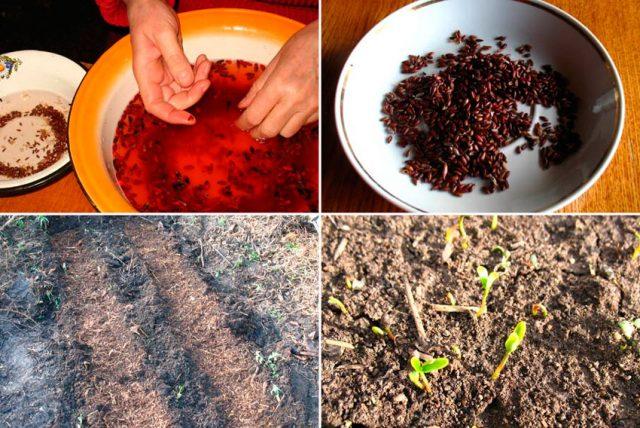
For planting seedlings, it is necessary to organize a greenhouse. The process consists of several stages:
- Preparation of the base. It is made up of compost, on top of which forest litter or a mixture of rotted foliage and soil is laid, laid out with a height of 10-15 centimeters. This is followed by a layer of river sand 4 centimeters high.
- The resulting substrate should be thoroughly tamped and watered abundantly.
- From above it is covered with a film or transparent glass.
The finished greenhouse will be a temporary landing site for cuttings.
Cuttings
Those who want to breed barberry should give preference to cuttings. It is advisable to cut off the shoots in the morning, while the dew persists on them.
To prepare cuttings, do the following:
- Prepare a sharp knife.
- Pick up a one-year-old branch with elastic bark. It is better to choose the one with at least 4 internodes.
- Cut off the shoot almost at the root.
- Place the scion in a container of water.
- Move it to a darkened place.
See also
Botanical description of varieties and types of chicory, useful properties and contraindications
To read
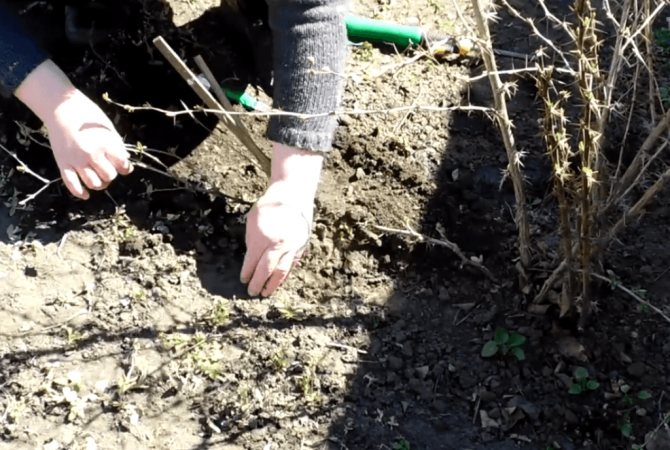

When the material is ready, the scion is cut off.
Green cuttings
For propagation of the culture, you can use green cuttings. From a one-year growth, you need to cut out the middle part of the stem with a length of 8 to 10 centimeters. All slices must be done at a 45 degree angle.
On each fragment of the stem, the leaves should be shortened in half, and a couple of them should be removed from the bottom.
Ready cuttings can be tied in bunches and placed in a lower cut in a container of water. This will greatly improve the rooting of the resulting seedling. Next, you should plant the cuttings in a greenhouse, and then in the ground.
Woody cuttings
For propagation of the bush, woody cuttings are also used. The procedure is performed at the end of autumn. Two-year shoots should be chosen as the starting material. They need to be cut into 20 centimeters in length.
Important! Be sure to cut off the shoots at an acute angle.
Then they land in a deep trench. Powder with a layer of mulch will help to root the stalk (you can replace it with fallen leaves). When spring comes, the planted cuttings are placed in greenhouses. The further procedure completely repeats the actions with green cuttings.


Dividing the bush
You can breed a beautiful bush by dividing the bush, which is used if you need to quickly obtain young seedlings. The procedure is as follows: the bush is dug out as carefully as possible and cut into pieces. Each slice should be treated with a special growth-stimulating paste. If the root system is sufficiently developed, it is enough to cut the root and plant the resulting seedlings in different holes, after moistening them.
We grow from seeds at home
A healthy bush can be obtained even from a small seed. However, the method of growing barberry with seeds is quite painstaking, and the probability of sprouting is low. Sowing of seeds is carried out in the autumn, in furrows with a depth of 3 centimeters. Sprouted seeds are cleared of weeds and thinned out. A year later, the seedlings are transplanted to the permanent location of the bush.
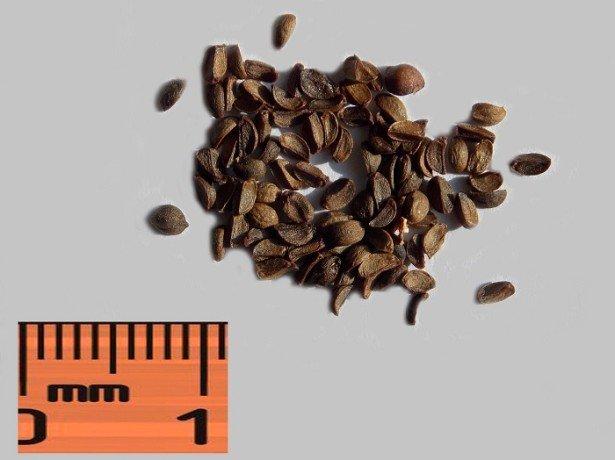

Important! Sometimes barberry propagates by self-seedlings.
Root shoots
Quite often, buds form on the roots of barberry, from which shoots appear. They make it possible to grow new bushes. If overgrowth is found, do the following:
- Dig in the resulting sprout.
- Cut the junction of the mother bush with the shank with a secateurs.
- Together with a lump of earth, transplant it to a selected place on the site.
See also
How to properly collect and dry chicory at home, harvesting rules
To read
Breeding barberry in this way is the most painless for the plant and does not require much effort.
Layers
If a barberry bush is already located on the site, and it suits the owner, but you want to add a few more of the same to the landscape, you can use layering to propagate the shrub. For this, healthy annual branches are selected. Furrows are made around the mother bush and moistened.
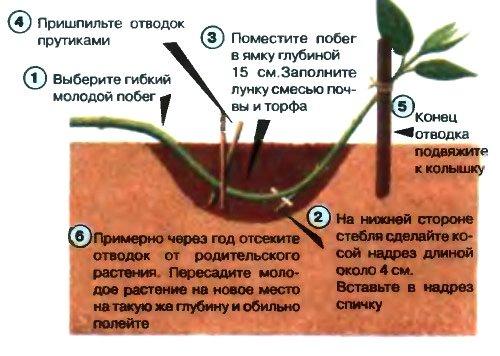

Shoots 15 centimeters long are placed in the grooves obtained, fixed and covered with earth so that only the tops are visible. During one season, the cuttings are watered, and by the fall, ready-made seedlings with their own root system are obtained.
Top dressing
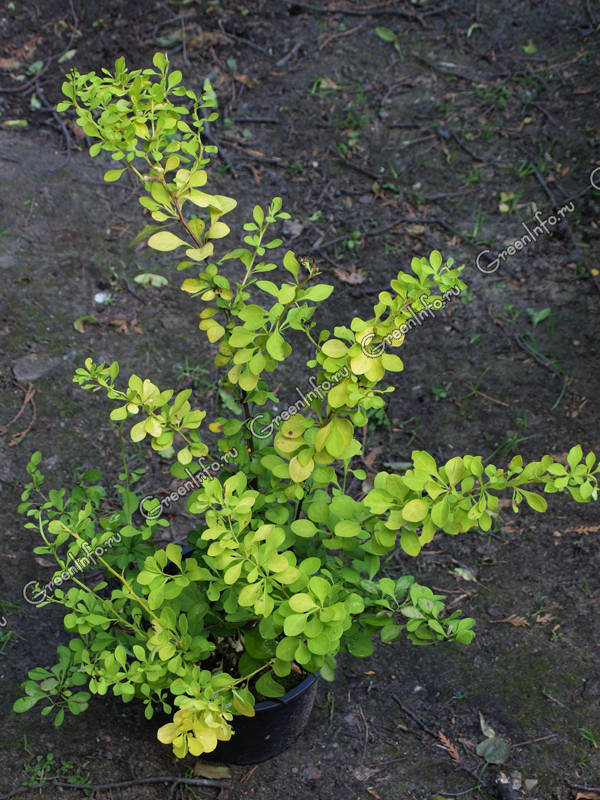

Barberry Thunberg Aurea
Starting from the second year after planting, barberry bushes require additional feeding. In the spring, nitrogen fertilizers are needed (20 g of urea per bucket of water), it is useful to water the bushes with slurry diluted 5-6 times, or bird droppings diluted 10 times. Then such dressings are carried out after 2-3 years.During summer dressings, especially for adult shrubs, before flowering, granulated complex fertilizers with microelements, for example, "Kemiru-Universal", are applied. At the beginning of autumn, 15 g of superphosphate and 10 g of potassium fertilizer are scattered under each adult bush.
Site preparation and planting pit
If you plan to plant one seedling, it is enough to prepare a hole measuring 45 × 45 centimeters and 50 centimeters deep. So much space is needed not only for the seedling, but also for the fertilizer that fills the space.
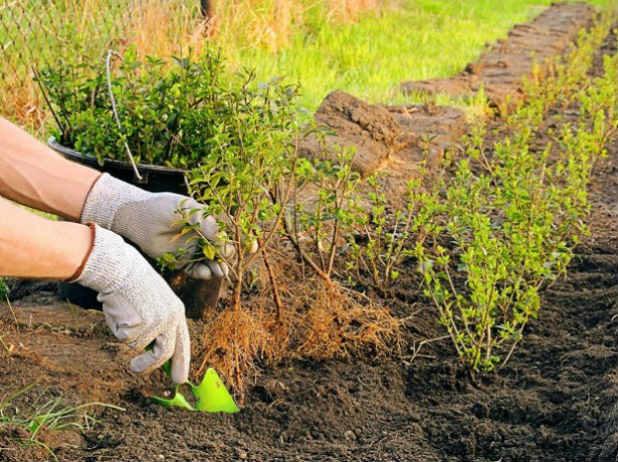

Water is poured into the resulting hole. Next, a drainage layer is laid on the bottom in the form of pebbles or pieces of wood. After preparing the pit, it is filled with a mixture of peat, soil and humus.
Shelter barberry for the winter: is it necessary and how to properly cover (mulch)
Barberry is quite frost-hardy and winter well even in the conditions of the Central strip (Moscow region). Therefore, no shelter for the winter his not required.
Of course, in cold winters, the tops of the shoots can freeze over, but in the spring they will grow quickly enough again.
However, still young and even more recently planted seedlings barberry should still be insulated before wintering. Namely, it will be enough to just mulch.
Well, now you know what to do with barberry in the fall in order to properly prepare the shrub for winter. The activities are all simple, but only desirable, i.e. optional.
Video: preparing barberry for winter - sanitary pruning, haircut and autumn feeding
Planting and caring for young barberry
The cultivation of barberry depends on the quality of the planting. A substrate is poured into the prepared hole, a seedling is placed on it. Further, the roots are straightened, and the seedling is covered with earth. After compaction of the soil, it is poured and watered. From above, the planting site is mulched with peat.
After planting in open ground, young bushes require compulsory care. It consists of several mandatory operations:
- regular watering;
- weed removal;
- seasonal feeding.
By the fall, the seedlings become stronger and can overwinter.
Reproduction of barberry will make it possible with the help of one bush to create a beautiful landscape with spectacular plants that delight the eye all year round.
Botanical Description of Barberry
Barberry (Berberis) is a deciduous, semi-evergreen or evergreen shrub or tree from the Barberry family. The stems of Barberry are covered with sharp thorns - modified leaves, of which only the central veins remain.
In the axils of the thorns, short stems arise, which is why the leaves of the Barberry are collected in a kind of bunches. Leaf plates - simple or leathery, alternately arranged. On the shoots of the first year, the leaves are arranged singly in a spiral. Depending on the variety, leaf plates can be painted in different colors: green, purple, yellow, sometimes motley, spotted, with a beautiful border.
Barberry flowers are small, fragrant. They are orange with red blotches or golden yellow. The flowers are collected in racemose or corymbose inflorescences, on each flower petal there are two nectarics, and therefore the plant is considered melliferous. In some species of Barberry, flowers can be single.
The fruit of the Barberry is a berry, the shape and color of which depends on the species. It can be elliptical, ovoid, or nearly spherical. The berry length ranges from 8 mm to 1.2 cm, with one or five seeds. Color - red or black.
Preparing for winter
All young seedlings and seedlings of barberry at the end of autumn should be tightly covered with coniferous spruce branches or a layer of dry foliage... If the leaves are poured not on the ground, but on a fine mesh, then in the spring it will be easy to remove them, keeping the expanding buds. You need to start the shelter when, throughout the week, the temperature is set at -5-70 frost, and the soil freezes to a depth of 3-5 cm.It is important to protect immature shoots from excess dampness, soaking and damping, to protect them from sudden temperature fluctuations and the formation of an ice crust. Heat-loving varieties of Thunberg barberry and some Asian species at an early age should be wrapped for the winter with burlap, or thick kraft paper, on top with modern covering material (lutrasil, spunbond, etc.) and wrapped with a rope so that the plant does not open in the wind. If you use only one non-woven material, then there will be increased air humidity under it, which is fraught with barberry. It is important that the shelter does not reach the ground and that the lower part of the crown is ventilated. On warm spring days, you should not be late with the removal of the shelter, which will limit the growth and development of ornamental shrubs.
Popular mistakes when breeding barberry
Gardeners make mistakes all the time. But if they are not implemented, then how to learn how to grow plants differently. Only through trial and error can you achieve the desired result. There are several popular mistakes when breeding barberry:
- Only a few seeds are taken for planting. Growing young plants requires patience and lots of seeds. This is necessary because of the poor germination of the latter.
- When digging up root shoots, if you leave a small root system for a young cuttings, there is a danger of ruining the young seedling.
- During the division of the shrub, the rhizomes are severely damaged - with this procedure, the plant will hurt for a long period, trying to grow new roots, but with a large ground part, it will be quite difficult to perform the process.
Thus, the barberry is propagated by a wide variety of methods. Not all are suitable for all plant varieties. To obtain a shrub with maternal qualities, it is recommended to use vegetative propagation methods. But with seed growing, the resulting shrub can come as a surprise to the gardener.
Video: ways of breeding barberry
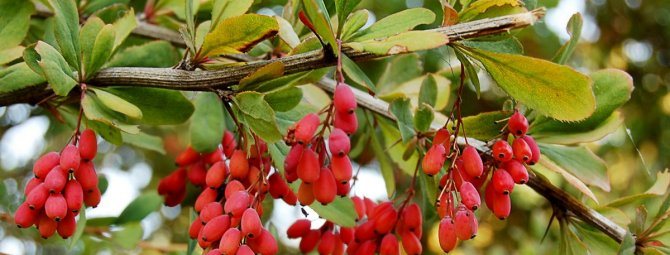

Barberry is a plant that combines many positive qualities. Due to the high decorativeness of the bush, it is used as a hedge. Jam, marshmallow, sweets and drinks are prepared from barberry berries, they are added to sauces and marinades. Leaves, roots and bark contain coloring pigment. Barberry is a good honey plant, easily tolerates a haircut. Therefore, it is not surprising that gardeners want to plant this plant in their area.
Reproduction by layering
The method is extremely simple and very effective. In early spring, as soon as the soil dries up, choose an annual shoot on the bush. Next to it, dig a small groove to a depth of about 15-20 cm. Then tilt the branch, carefully lay it there and secure it with a metal or wooden hairpin, cover it with earth. Only the tip of the branch should remain above the soil surface. By autumn, the shoot forms its root system, and it can be easily separated from the mother plant. Using this method, you can get any barberry. Reproduction by cuttings does not always give a positive result, but here everything is simple and easy.
Subtleties when breeding barberry
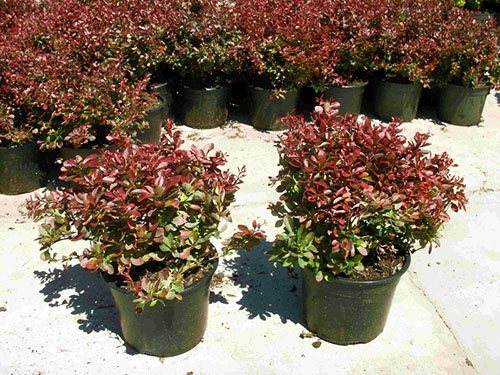

Many people are interested in how to propagate barberry, but not everyone knows exactly how and how to do it correctly. This plant is absolutely not demanding for the soil, but a shady place with high humidity will not suit it. And it can multiply in different ways - by seeds, and by cuttings, and by dividing the bush. In this, each gardener will choose the option that is most suitable, because everyone has both advantages and disadvantages:
- rooting of cuttings takes a very long time;
- when propagated by seeds, a low germination rate is observed, about 20-40%;
- not every type of barberry is able to drive out root young growth;
- there is a great risk of damage to the root system when dividing the bush.
Sanitary pruning
This procedure is advised to be performed regularly. The plant needs it to get rid of dry, diseased and thinned branches. Thanks to sanitization, you can thin out the crown of the plant if it thickens too much. This helps new sprouts gain strength and form buds correctly, which in turn also affects flowering and fruiting power.
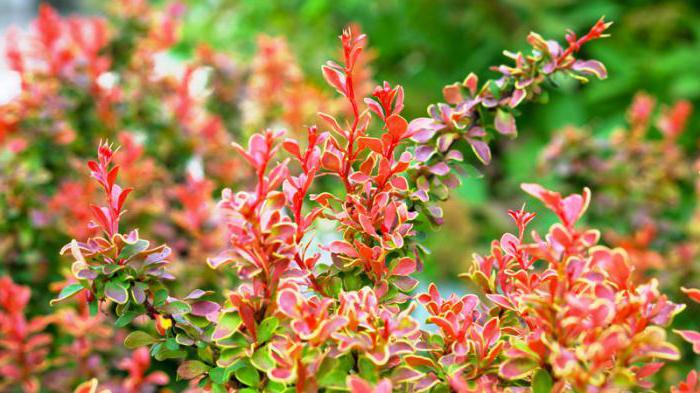

Sanitary pruning must be done if the plant is sick. After the procedure, it is necessary to burn all the removed elements. Otherwise, the disease can not only infect the bush again, but also spread to other inhabitants of the suburban area.
An integral part of care is pest and disease control
All plants are susceptible to disease and need protection from pests. And barberry in this regard is no exception. He has "personal enemies" that attack only him, as well as those that also affect other cultures and are transferred from them. Diseases and pests can attack barberry not only in spring or summer, but also in autumn. Therefore, it is necessary to control his condition and, if necessary, treat him at this time of the year.
Of the pests, barberry can be affected by insects such as:
- barberry aphid;
- flower moth;
- leaf roll;
- barberry sawfly.
The barberry aphid colonizes the leaves and draws juice from them. As a result, the affected foliage begins to wilt and soon dries up and shrivels. This is a clear sign of the appearance of aphids. There are several ways to deal with it. In order to prevent the appearance of aphids, the plant must be sprayed with a solution obtained by dissolving solid or diluting liquid laundry soap in water in a ratio of 300 g per 10 liters, respectively.
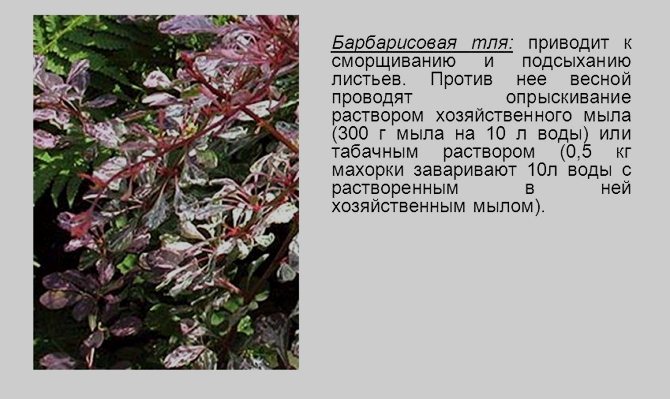

Protection against barberry aphids
If this pest has already appeared on the barberry, then the bushes should be sprayed with Fitoverm with a concentration of active substances of 2 g / l (0.2%). If necessary, the treatment can be repeated 2-3 more times with an interval of 3-7 days. But usually once is enough. After treatment, the aphid begins to die on the second or third day, and the maximum effect will be visible on the fifth or seventh. Another remedy for barberry aphid, which is used both for the prevention and treatment of bushes already affected by it, is a solution obtained by mixing 100 g of laundry soap and 250 g of makhorka in 5 liters of water.
The flower moth "attacks" only the fruit barberry, does not touch the decorative one. She eats away the berries of the plant from the inside. The above-mentioned Fitoverm will help to overcome the moth. You should use it the same way. Another way to combat the moth is to treat the bushes with a 1-3% chlorophos solution.
The leafworm feeds on leaves. And not only barberry, but also other trees and shrubs, including barberry. Mainly damages the upper leaves of shoots and branches. This is manifested in the folding of the leaves. If the defeat of the bush with a leaf roll is of a local nature, then it is better to cope with this without the use of chemicals. It is necessary to carefully so that the pest does not escape, to cut off all the affected leaves and twigs, and then burn them along with the contents. In the case of significant areas of lesion of cousins, which, of course, it is better not to wait, it is necessary to use the same Fitoverm or other chemicals.
The barberry sawfly is still rare, but it can leave a shrub without leaves in a few weeks. Actually, the harm is caused not by this caterpillar itself, but by its larvae. They can be found on the underside of the leaves, for which it is necessary to regularly inspect the latter. Found larvae just need to be removed and destroyed. If necessary, you can spray the bushes with a pyrethrum-based composition. A 1-3% solution of chlorophos is also suitable.As a last resort, you will have to use synthetic pesticides.
Choosing a place on the site for growing Thunberg barberry
The shrub prefers well-lit and open areas, however, it should be protected from gusts of cold winds. It will grow in partial shade, but under such conditions, the attractiveness of the appearance will noticeably suffer - the foliage will become less bright.
Before planting the Thunberg barberry, you should study the composition of the soil on the site. The shrub does not impose special requirements on the soil, but it will grow much more willingly on a loose, nutritious substrate of a neutral reaction. Too dense soils are diluted with peat and humus before planting, areas with high acidity require the addition of slaked lime (400 g is enough for 1 planting pit). In order to make the soil more fertile, it is necessary to add a complex mineral fertilizer, calculate the dosage according to the instructions.
Varieties
Despite the variety of species and varieties of barberry, each specimen is individual and beautiful. When choosing a plant variety, you should be guided by your preferences. To obtain edible fruits, one type of shrub is chosen, for decoration of the garden - others.
Common barberry is a tall species of barberry (up to 3 meters). The fruits are large (1.5 cm), edible, numerous. The common barberry has many varieties:
- Albo-Variegata - the bush has decorative foliage with white specks or stripes,
- Aureo-Marginata - a bush 1.5 m high, leaves with a golden or silvery border,
- Atropurpurea is a shrub with red or purple leaves that does not shed foliage for a long time.
- Asperm is a bush with dark red, seedless fruits that are easy to process.
Barberry Thunberg is a deciduous shrub with a height of 50 cm to 1 m. It is considered one of the most beautiful ornamental species. A feature of this species are branches that extend horizontally. Young shoots are creamy or red in color, and with age they acquire a brown or reddish-brown hue. The forms of this species are quite diverse, differ in the number of flowers, color of foliage, shoots, and other parameters. Gardeners prefer varieties: Golden Ring; Red Pilar; Orange; Kornik.
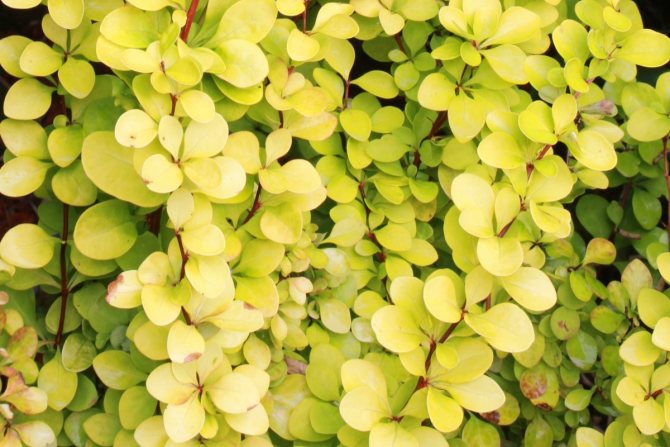

Photo:
Ottawa barberry is a hybrid that appeared in the process of crossing the common barberry and the Thunberg barberry. He has absorbed the most striking properties from these representatives of the genus. This species is frost-hardy, grows quickly enough.
What tools will be needed
All plants have the ability to grow. Without careful pruning, your site will turn into a solid impenetrable forest. Moreover, if barberry bushes grow on it. To tackle the task of trimming with ease, you need to have the right tools on hand. To fully care for the garden, a responsible gardener needs a number of tools:
- lopper;
- brush cutter;
- hacksaw;
- secateurs;
- scissors.
Of course, all instruments must be in perfect condition. Here you should rely on certain requirements.
- The tool must be of high quality and withstand the stress.
- All units should not be too heavy, and they should also have a bright appearance (provided by the color scheme).
- Cutting objects should have narrow ends. Then you can get to the very base of the plant.
Now let's move on to looking at each garden item and its purpose.
- The tool used to remove branches about 30 mm thick is called a pruner. These products are available with double-sided and single-sided sharpening.
- The brush cutter is used for pruning young plantings. With the help of this device, hedges are formed. Brush cutters are: electric, mechanical, gasoline and battery powered.
- The lopper is considered a reinforced version of the pruner.Its difference is the long handles that allow you to reach the most distant branches.
- Hacksaws and saws are used for trimming.
- It is very convenient to use garden shears with a long blade for pruning. Scissors for metal are a good alternative to them. It is they who will fit for curly hairstyle of plantings and the formation of a hedge from them.
For effective pruning of barberry bushes, the following tools and materials are needed:
- garden pruner with sharpened blades;
- a tool for pruning knots (required for working with old and heavily thickened bushes);
- protective tight gloves;
- a disinfectant such as potassium permanganate solution;
- oil paint or garden var (necessary for processing sections with a diameter exceeding 5 millimeters).
All work on pruning barberry shrubs should be done in a thick fabric jacket.
The soil
During the planting of barberry in the fall, despite the fact that the plant is unpretentious to the ground, it is worth preparing the soil for young seedlings. In this case, the pH value, as already mentioned, should be about 6-7 pH.
Sand, garden soil, and humus can be used as potting mix. They should be mixed in equal proportions. In order to lower the acidity of the soil, sprinkle it with 200 grams of wood ash under one bush. You can also use slaked lime. In this case, 300-400 grams is sufficient.
Autumn transplant
In this case, it is worth clarifying that no matter what time of the year the work is carried out (spring or autumn), you need to pay attention to the roots of adult plants that are more than 4 years old. They withstand this procedure much worse. To alleviate the condition of the barberry tree, it is best to transplant with an earthen clod. Nevertheless, even thanks to these measures, the plant will get along in a new place for a very long time. It takes up to 3 years for barberry to recover.
Decorative properties of barberry Thunberg
There are many varieties of barberry, they all differ in a different structure of the shrub, the intensity of the color of the foliage and the shape of the inflorescences. Tall shrubs will look good in single plantings and as a hedge. Dwarf specimens not exceeding 35 cm in height can be placed on a rocky hill or decorated with a border.
Magnificent Thunberg barberry - growing and care is practically no different from other species. This is a compact bush no more than one and a half meters high, ideal for decorating hedges and zoning the site. Leaves are yellow-red, bears fruit abundantly, but berries are not eaten. Barberry looks most impressive in autumn, when the foliage is colored with scarlet, ruby or dark crimson tones. The following varieties are especially popular:
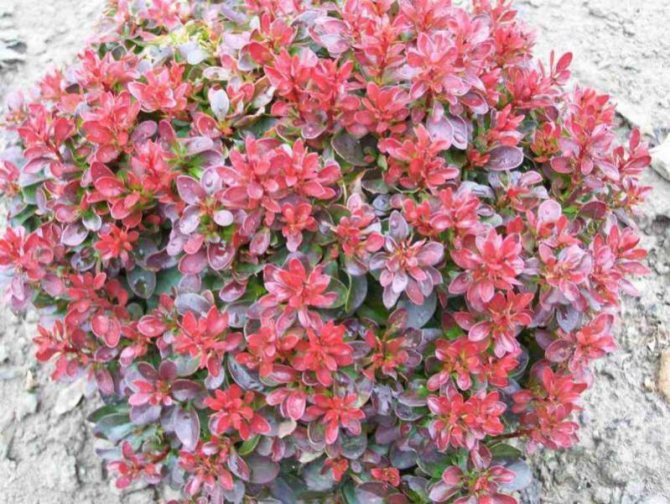

How barberry reproduces in vivo
Barberry is a large shrub that can grow up to 2 m in height. It is highly decorative all year round. It blooms with yellow flowers, collected in bunches. The fruits are ruby in color, often decorate bare shoots even in winter. The foliage takes on bright red tones in the fall.
Varieties have been bred in which the leaves have patterns, borders, or are painted in unusual shades.
If you give the barberry freedom for several years, then, like a dog rose, it will capture the entire adjacent territory with shoots. In addition, this bush reproduces well by self-sowing. But if your goal is to get cultivated seedlings that retain varietal qualities, then it is better to use reliable and proven agricultural propagation techniques.
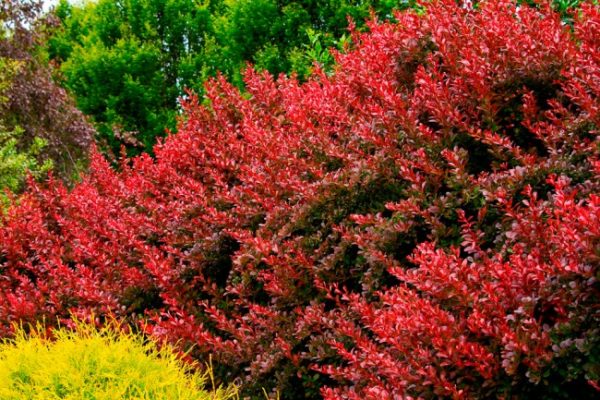

The thickets of barberry look very beautiful, but it is simply impossible to care for such a continuous mass of shoots with sharp thorns.
Features of autumn pruning of barberry
Typically, this procedure is performed in the spring and fall. It is necessary in order to select thin, dry or damaged branches. It is better not to leave underdeveloped branches for the winter. The fact is that they will take excess energy from the plant at a time when it needs additional energy.
It is recommended to prune barberry with tight gloves, as the bush is very prickly. Also, in autumn and spring, shaping can be done in order to give the plant the necessary shape.
Features of flowering and fruiting
Blooming barberry is an excellent honey plant. It attracts pollinating insects to the garden. Long bloom: up to 3 weeks.
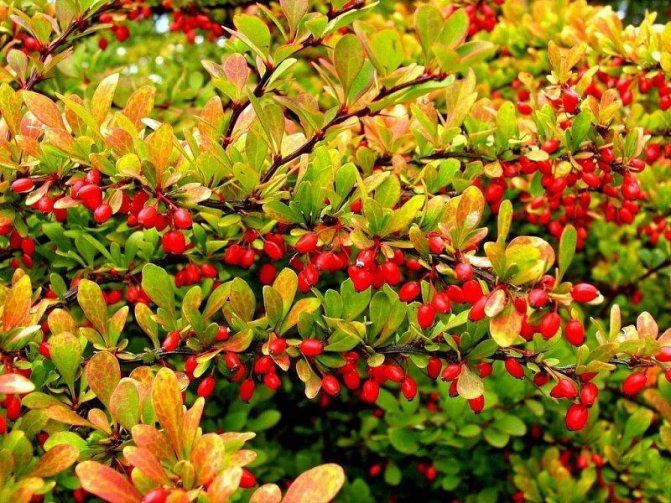

What year does it begin to bear fruit
Berry barberries, when planted with 2-year-old seedlings, begin to bear fruit in the 3rd year of life in the garden. When forcing plants from seeds - for the 5-6th year. The shrub yields annually.
The period of flowering and ripening of the crop
Flowering begins in May, but there is no clear period: it depends on the average daily temperatures. The shrub blooms for 2-3 weeks. At the same time, it smells good.
The use of shrubs in landscape design
The main value of barberry is a quick recovery after pruning and decorativeness throughout the year: from early spring to winter. Against the background of the snow cover, scarlet clusters of berries look attractive. It is the decorativeness of the shrub that makes it attractive for landscape design.
Breeders offer various decorative varieties and hybrids of barberry. They are small in size and have unexpected foliage colors. But the fruits have a specific bitter taste: they are not eaten. Such graceful bushes adorn rock gardens, paths.
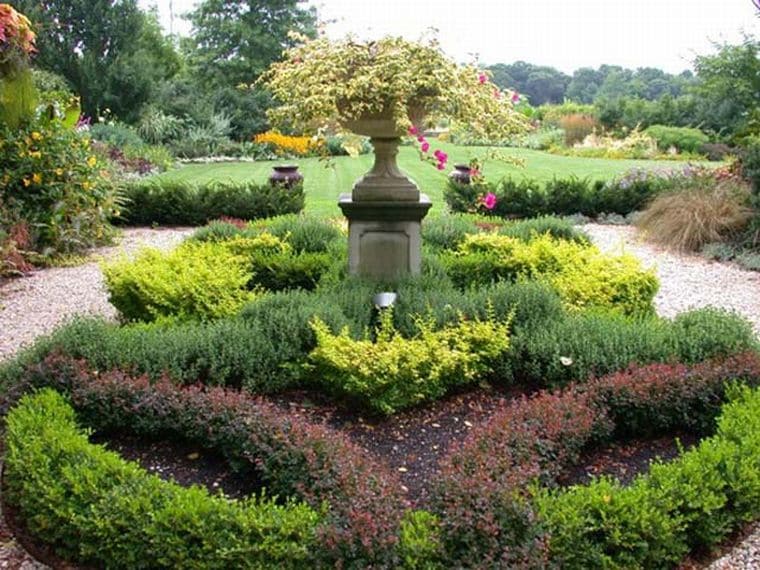

Gardeners use large-sized ones to create impassable hedges. In this case, they are planted in a checkerboard pattern at a distance of 50-100 cm from each other. The common barberry can be used as a specimen plant. It is cut into its original shape and admired throughout the year.
Follow-up care
If the plants are improperly taken care of in the garden, they can die. Barberry is no exception. To avoid trouble, it is necessary to monitor the moisture content of the soil when growing this plant. Otherwise, it can get sick.
It is imperative to carry out pest control. The most effective way is to treat branches and leaves with soap and water. Colloidal sulfur and Bordeaux mixture can prevent barberry diseases. If you notice mottling on the leaves, then treat the bush with copper preparations.
In the next video, you can watch the process of pruning barberry.
This type of plant pruning is considered the most important, as it allows you to protect the barberry from death due to pests or diseases. Sanitary cleaning should be done regularly. It provides for the removal of spoiled branches and thinning the crown. During the procedure, you must carefully handle the young shoots.
It is best not to touch them. They should grow healthy and long. After all, it is these shoots that affect the quality and quantity of barberry fruits. It is enough to look at the ornamental plant to understand whether it needs pruning or if it is worth postponing this procedure until a later time. When working with it, it is advisable to use a well-sharpened tool. Blunt scissors for pruning barberry will not work, as they will easily injure the branches.
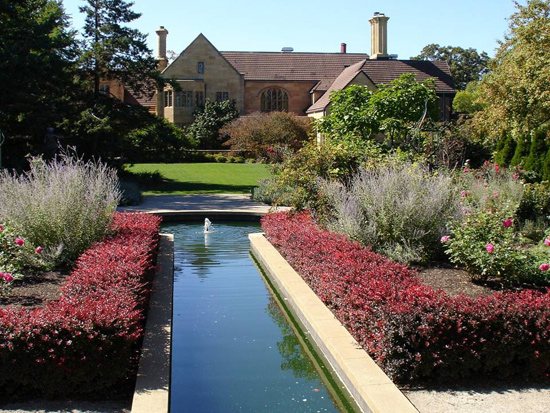

To maintain an attractive and healthy appearance of the barberry shrub after pruning, it must be properly cared for. It consists in processing the cuts and feeding the plant.
Top dressing
The type of fertilizer needed for the shrub depends on the situation. In the spring, after pruning, the plant needs nitrogen, which is contained in simple organic fertilizers.To do this, it is necessary to distribute an aqueous solution of mature compost along the near-trunk circle.
In summer, after formative or sanitary pruning, barberry needs phosphorus and potassium. To do this, feed the plant with oven ash or bone meal. You can also use ready-made mineral fertilizers.
The decorative shaping pruning procedure ends with foliar feeding of the shrub. For these purposes, a liquid solution of potassium humate or an infusion of fermented herbs is used.
If the slices have a diameter of 5-7 millimeters or more, they must be properly processed. This prevents pathogenic bacteria and dangerous fungal spores from entering.
Immediately after trimming, a thin layer of any of the following products must be applied to the cut:
- special antiseptic for horticultural crops;
- garden var;
- brilliant green solution;
- oil paint.
In such cases, wood decay does not occur, and fresh bark grows quickly.
How and where is it better to plant a plant
Barberry is unpretentious, therefore it can grow in almost any conditions. However, experienced gardeners recommend following certain rules. Since care and planting often depend on the variety of shrub, it is worth basing on the variety. So, if the bush implies the presence of decorative spots on the leaves, the plant should be planted in a sunny place - the more light falls on the foliage, the brighter they will be. In addition, it is better not to plant a bush in a lowland where all the rainwater gets, since the barberry does not tolerate a large amount of moisture.
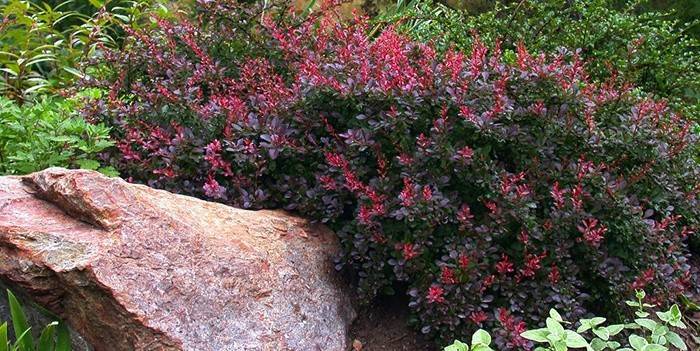

The shrub feels great next to other plants, but the distance between them should be at least one and a half meters, otherwise the barberry will not be able to develop normally and will grow disproportionate. The unspoken rule of gardeners is to plant a free plant so that there are no more than two seedlings per running meter. If you want to make a hedge, the number of young shoots increases to 4.
Cuttings with bare roots are allowed to be planted only in late autumn, after leaf fall, or in early spring, when there are no buds on the trees. However, it is better to choose plants with closed roots in containers, they can be planted at any time during the gardening period. Moreover, before planting, it is worth treating the soil with nutritious, light fertilizer. Add peat, turf soil, ash, superphosphate to the hole.

